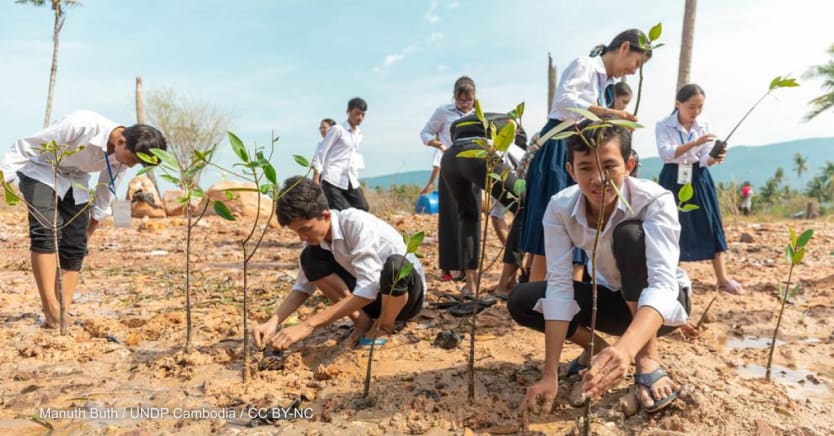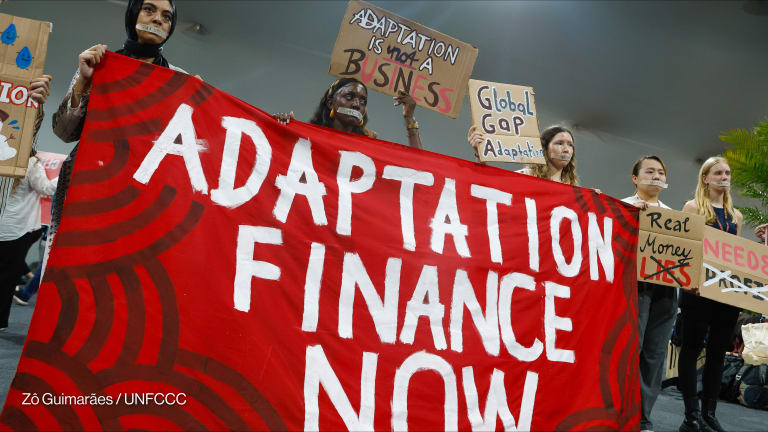
The impacts of the climate emergency we are living through today are felt most acutely by communities in fragile environments and disproportionately among vulnerable groups in societies. It is Indigenous peoples, women and girls, people with disabilities, and people experiencing poverty who face the greatest risks to their lives and livelihoods due to intensifying climate impacts.
These groups are often the most experienced in dealing with these impacts at the local level. However, they are usually far removed from decision-making around resilience and climate adaptation. This needs to change so that locally led adaptation becomes the norm.
Locally led adaptation
New research from the Adaptation Action Coalition illustrates how locally led adaptation, or LLA, is already being put into practice globally. This approach values priorities and expertise that come directly from the most impacted communities and, most importantly, ensures local partners have agency over adaptation action.
Local groups and community members understand the nuances of their environment, know the social implications of adaptation efforts and are well-positioned to promote holistic approaches that help avoid unintended consequences. Communities can be quicker, more inventive, and agile in meeting climate challenges efficiently and offering lessons that can be used elsewhere — and outside support must complement and synergize with these efforts.
Funding LLA can address historical imbalances of power, which would otherwise be deepened by climate change, but this action requires funding, support, and collaboration from governments, development partners, and civil society.
Climate justice and the global south
At the 26th United Nations Climate Change Conference, or COP 26, global leaders committed to doubling adaptation finance by 2025, based on 2019 levels, and pledged over $450 million for LLA. Now they must make good on this promise with COP 27 underway.
LLA is not a pipe dream. Many projects are already thriving globally. The Environmental Investment Fund in Namibia has successfully accessed climate finance from entities such as the Green Climate Fund and distributed these funds at the local level, strengthening the rights and agency of groups managing natural resources.
Meanwhile, Fiji’s National Climate Finance Strategy is designed to ensure resources are reaching communities experiencing disproportional vulnerability to climate change. The strategy explicitly calls on project planners to incorporate women and other marginalized populations into investment planning and mandates the collection of disaggregated data on how these groups are affected by project activities.
The strategy is already demonstrating its utility. In response to community requests for nature-based sea walls, it is expanding the Ministry of Waterways’ coastal erosion protection to meet local adaptation priorities. Meanwhile, communities displaced by climate change have an active role in the relocation process, through a consent-driven process and consultation phase, aligned to Fiji’s Planned Relocation Guidelines.
How to make LLA work
Shifting power means changing the status quo, which is not easy. Patient, predictable, flexible, and accessible funding is needed to address the structural barriers to local access. But this must also consider the need for development partners to be accountable to their taxpayers, and the need to demonstrate resource efficiency for foreign aid and development spending. Delivering viable long-term resilience and adaptation outcomes with local partners will require new ways of working, including more flexibility around procurement, and working together to assess progress and risks.
Governments can advance implementation of LLA by integrating it into existing policies and institutions and dedicating sufficient public finance.
To set up for success and align with the principles for LLA, funders must ensure that local partners have decision-making authority in project design and delivery, are supported and fairly compensated for their time and resources, and can access direct and transparent funding mechanisms.
Two-way accountability between funders and local partners is a critical element of LLA. Providing support to communities to navigate administrative and fiduciary requirements can help with accountability, while strengthening institutions.
LLA on the world stage
Locally led adaptation is not formally on the COP 27 agenda. Yet prioritizing LLA through various funding, policy, and mechanisms will send a powerful signal that governments are serious about adaptation and sustainable development at COP 27. With LLA, national adaptation plans will be stronger and more attractive to funders, the U.N. Framework Convention on Climate Change processes such as the Global Goal on Adaptation and the Global Stocktake will benefit from better information, and climate funds will be more accountable to recipients and funders.
For leaders at COP 27, the focus must be on increasing allocated resources and delivering tangible action on LLA, placing local partners and their priorities center stage. Communities who have emitted the least carbon are facing the worst climate impacts.
While LLA is not the only solution to address this injustice, it is one effective tool to redistribute power, resources, and agency to communities already dealing with increasing crises.









